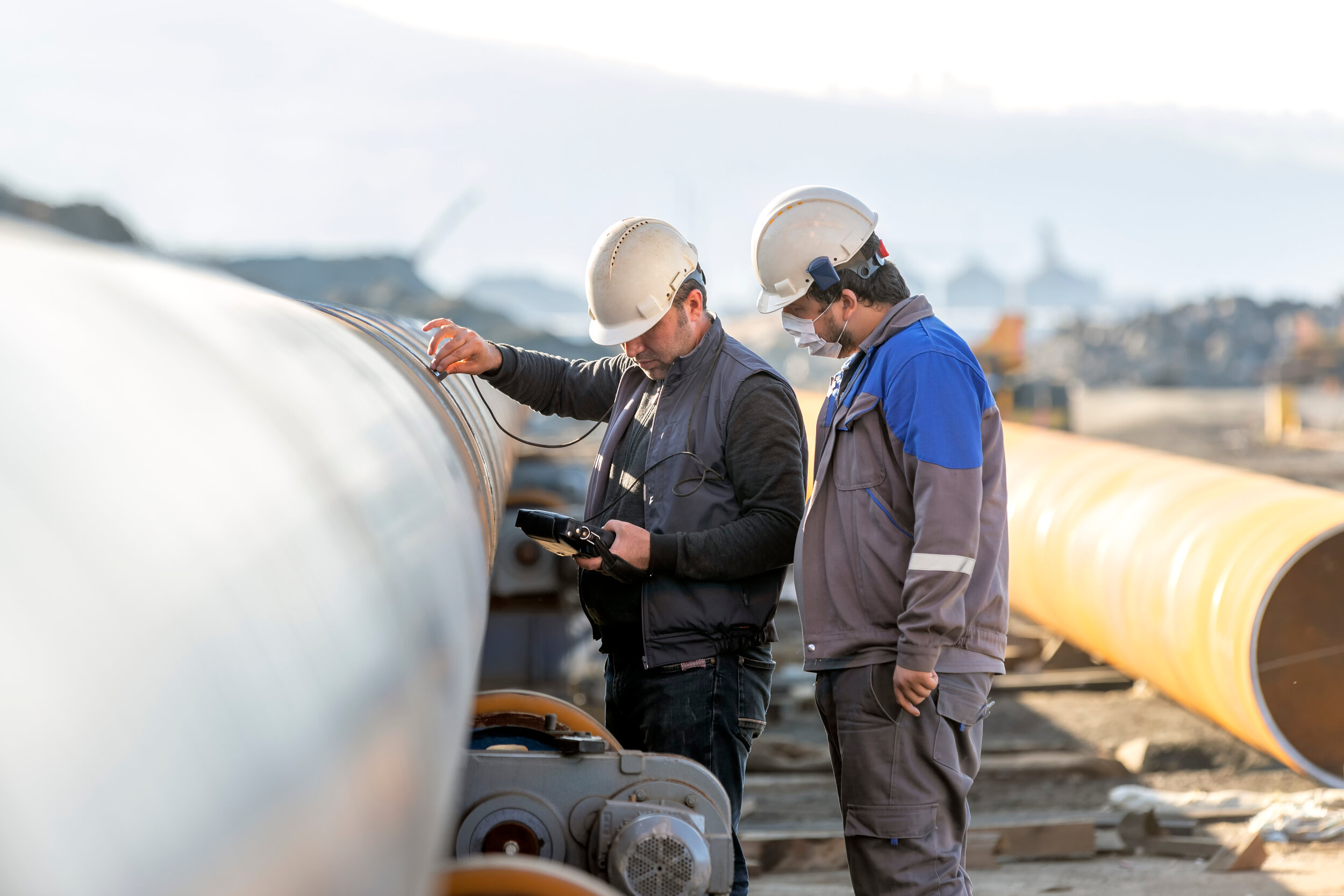Comprehensive Review of Pipeline Welding Examination Procedures
Pipe welding examination treatments play an essential function in guaranteeing that bonded connections meet stringent market requirements and requirements. From thorough pre-welding examinations to extensive post-weld assessments, a well-defined examination procedure is crucial for preserving the architectural soundness of pipes.
Pre-welding Inspection Preparations
Prior to beginning the welding procedure, extensive pre-welding assessment preparations are vital to make certain the stability and quality of the weld joint. These preparations include a thorough examination of the products to be welded, the welding devices, and the workplace. The materials need to be evaluated for any type of flaws, impurities, or inconsistencies that could endanger the weld. This includes monitoring for proper material grades, measurements, and surface area conditions. Pipeline Welding Inspection. In addition, the welding equipment requires to be evaluated to validate that it remains in good working condition, calibrated correctly, and appropriate for the particular welding procedure. Any type of issues with the tools must be resolved without delay to stop issues in the weld. The job setting have to be reviewed for tidiness, proper air flow, and safety measures to make sure a conducive setup for the welding operation. By carrying out detailed pre-welding examination prep work, possible concerns can be identified and resolved early, leading to reliable and premium weld joints.
Welding Treatment Qualification
Thorough pre-welding assessment prep work lay the foundation for the vital process of Welding Procedure Qualification, guaranteeing the stability and top quality of the weld joint. Welding Treatment Qualification (WPQ) is a crucial action in the welding process that entails testing and licensing welding procedures to ensure they satisfy details requirements and needs. The WPQ process generally includes welding treatment requirements advancement, welding treatment credentials testing, and paperwork of the outcomes.
Throughout welding procedure spec development, important information such as the welding process, welding materials, joint layout, and welding criteria are defined to develop a detailed procedure. Ultimately, welding procedure qualification screening is carried out to validate the suggested procedure's integrity. This testing usually includes welding examination coupons that are subjected to different mechanical and non-destructive tests to assess the weld's quality and adherence to the specified standards.
In-process Weld Examination
During the welding procedure, in-process weld inspection plays an essential duty in guaranteeing the high quality and stability of the weld joint - Pipeline Welding Inspection. This sort of examination includes keeping track of the welding criteria, evaluating the weld bead formation, and spotting any kind of prospective defects or discontinuities as they happen. By carrying out in-process weld assessments, welding operators can immediately resolve any problems that might arise, thus preventing further problems and guaranteeing that the last weld satisfies the required specifications
Usual techniques utilized for in-process weld inspection consist of visual examination, fluid penetrant testing, magnetic bit testing, ultrasonic testing, and radiographic screening. official site Overall, in-process weld assessment is crucial for keeping the quality and reliability of welded pipes.
Non-destructive Testing (NDT)
Non-destructive Testing (NDT) is an essential technique employed in pipeline welding inspection to analyze the integrity of weld joints without creating damages to the bonded structure. By utilizing different NDT techniques, assessors can review the top quality of welds and identify any issues or interruptions that might compromise the structural stability of the pipe. Typical NDT techniques utilized in pipe welding inspection include Radiographic Screening (RT), Ultrasonic Testing (UT), Magnetic Fragment Checking (MPT), look at this site Liquid Penetrant Testing (LPT), and Visual Screening (VT)
RT involves using X-rays or gamma rays to create pictures of the inner structure of the weld, permitting assessors to discover problems such as porosity, fractures, or incomplete combination. UT uses high-frequency acoustic waves to detect imperfections below the surface area of the weld, supplying thorough details regarding the dimension and place of flaws. MPT and LPT are utilized to identify surface-breaking problems by applying magnetic particles or penetrant fluids to the weld location. Furthermore, VT includes aesthetic evaluation of welds to recognize any type of noticeable flaws.
Post-weld Assessment and Paperwork

Documents of post-weld assessment findings is vital for keeping top quality control documents and making certain conformity with industry standards and laws. In-depth records should consist of details concerning the assessment methods made use of, the area and nature of any type of flaws found, and any type of restorative actions taken try here - Pipeline Welding Inspection. Appropriate documentation not only serves as a document of the weld's top quality yet also help in future maintenance and evaluation processes
Verdict

In conclusion, pipe welding inspection treatments play a vital function in ensuring the top quality and stability of welds. Overall, adherence to correct evaluation procedures is essential to the success of pipe welding projects.
From careful pre-welding inspections to extensive post-weld analyses, a distinct evaluation process is crucial for keeping the architectural soundness of pipelines. By performing in-process weld assessments, welding drivers can promptly resolve any kind of issues that might arise, consequently stopping additional problems and guaranteeing that the last weld meets the called for specifications.
Common methods used for in-process weld examination include aesthetic assessment, fluid penetrant testing, magnetic particle screening, ultrasonic screening, and radiographic screening.Non-destructive Screening (NDT) is a vital approach used in pipeline welding examination to analyze the stability of weld joints without creating damage to the bonded structure. Post-weld assessment entails numerous approaches to evaluate the welds for issues, including visual evaluation, color penetrant screening, magnetic fragment testing, ultrasonic testing, and radiographic testing.
Comments on “Safety And Security First: Comprehensive Pipeline Welding Inspection for each Project Phase”